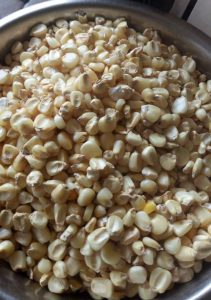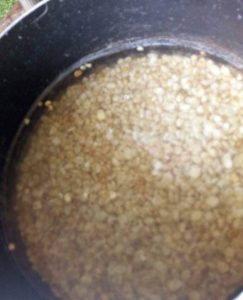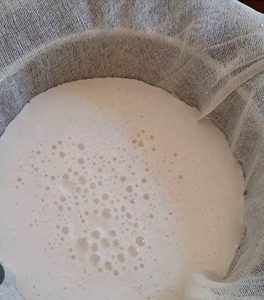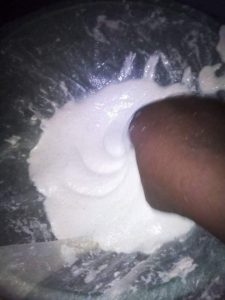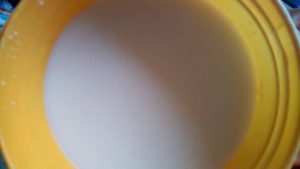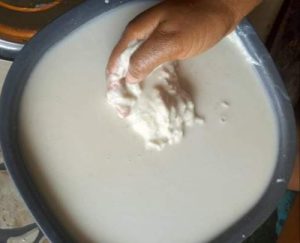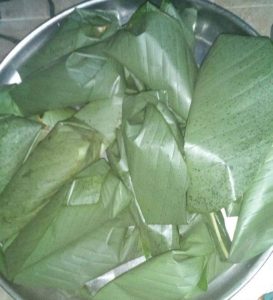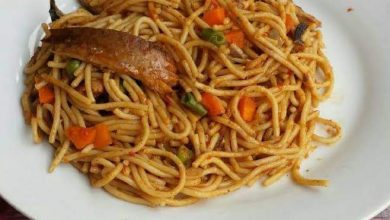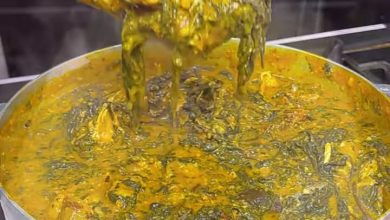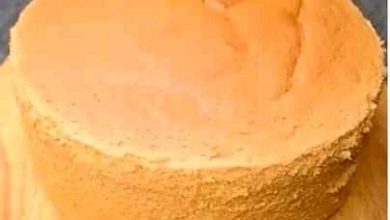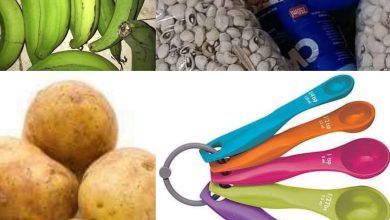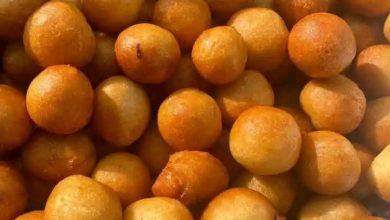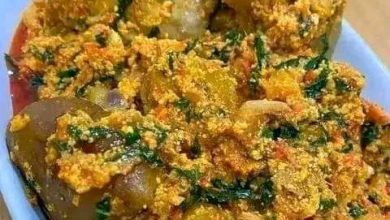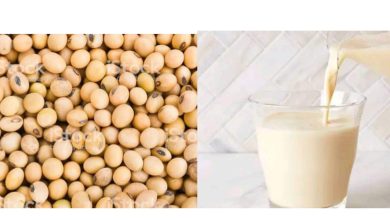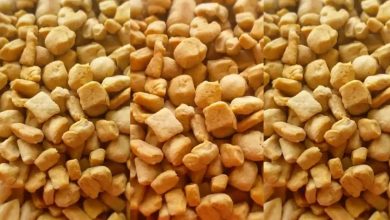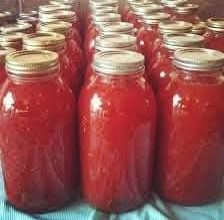How to make White Agidi (EKO) Recipe From Scratch
How to make White Agidi (EKO) Recipe From Scratch

Agidi or Eko is a popular Nigerian food made with cornflour. Agidi or Eko is called cornmeal or corn starch in English. It is quite tangy and can be eaten with almost every soup from Pepper Soup, Efo Riro, to Egusi, to Okro. It can also be eaten with moi moi, Akara, agidi jollof or okpa
Ingredients:
- 2 cups of corn
- 2 cups of water
- 1/2 teaspoon salt
- Uma leaves (Local moi moi leaves)
Preparations:
1. Remove dirts from corn, wash and soak in water for 15 to 24 hours.
2. Wash the corn after soaking and transfer into a cooking pot.
3. Add water to cover them and set on heat.
4. Stir occasional and turn off the heat when it is about to boil.
5. Drain the water and take the corn to the grinding mill.
6. Drape the Muslin cloth over a big bowl and tie it up.
Note: A muslin cloth is a cloth that allows only liquid to pass through it like cheesecloth.
7. Scoop in some grounded corn in handful portions and start rubbing it on the surface while adding water.
8. At some point you will feel just the chaff. Remove it and scoop in and repeat the process.
9. At the point when your hand can feel the water in the bowl from the top of the muslin cloth, stop adding water and just rinse the corn.
Note: Once grounded corn is mixed with enough water, the starch will escape into the bowl as you keep robbing on them while the chaff is left on the surface. This should be easy.
10. Remove the muslin cloth once you are done and allow the starch in the bowl to sit for up to 3 hours.
11. After this time, the starch should have settled at the bottom of the bowl and water on top.
12. Decant or pour out the clear water and stir what is left with a wooden turner.
Note: It should not be as thick as dissolved pap or custard and it shouldn’t be too watery either.
13. Pour into a pot, set on heat and start stirring with a wooden turner.
Note: The heat shouldn’t be too much, if it is forming solid crumbs, then the heat is too much. Reduce it a little.
14. Continue stirring until it looks like prepared pap but maybe a little thicker. This should take about 12 – 20 minutes before you get to this point.
15. Pour into smaller plates or use a leave to wrap.
16. Keep for about 1-3 hours for the agidi to cool and solidify.

Enjoy your Agidi/EKO. It can also be eaten with moi moi, Akara, agidi jollof.
Nutritional Benefit of Agidi/ EKO
1. Good for Eye Health: Remember, the two antioxidants I mentioned were present in corn, lutein, and zeaxanthin. These two antioxidants may prevent cataracts and age-related macular degeneration (AMD), which are two common ocular problems in Nigeria.
2. Good for weight loss: Despite comprising of mainly carbohydrates, agidi is a great Nigerian weight loss food. It has a moderate amount of calories and a decent amount of fiber, which makes it a great food to add to your weight loss diet.
3. Improves digestive health: Foods that are high in fiber are known to be good for the digestive system. Agidi is full of fiber, and hence it can improve the digestive system and is also easy to digest.
4. Healthy food for toddlers: Agidi is an incredible food you can use when introducing your toddlers to solid food. It contains a lot of vital vitamins and nutrients, and also has a good amount of carbs, which supplies energy. Other reasons why Agidi is great to toddlers is because it is very affordable, easy to digest, and readily available.
5. Healthy food for pregnant women: Agidi is a good source of vitamins and minerals, one of which is very useful to pregnant women. Folic acid is a must in your diet if you’re pregnant. This is because it ensures the efficient use of protein and prevents the risks of birth.

